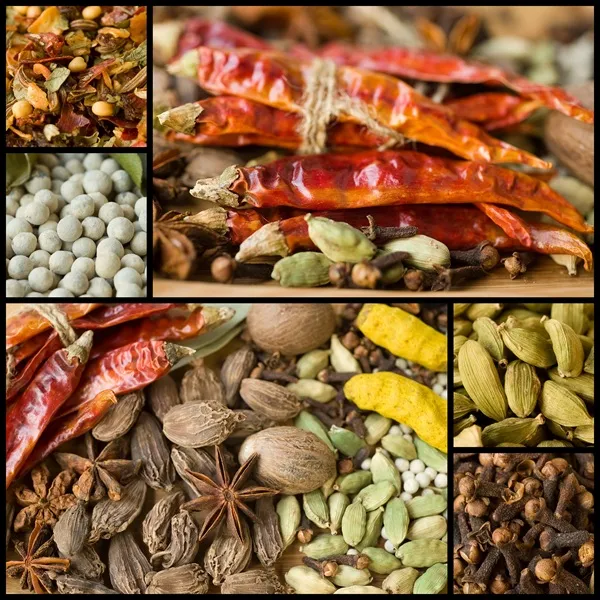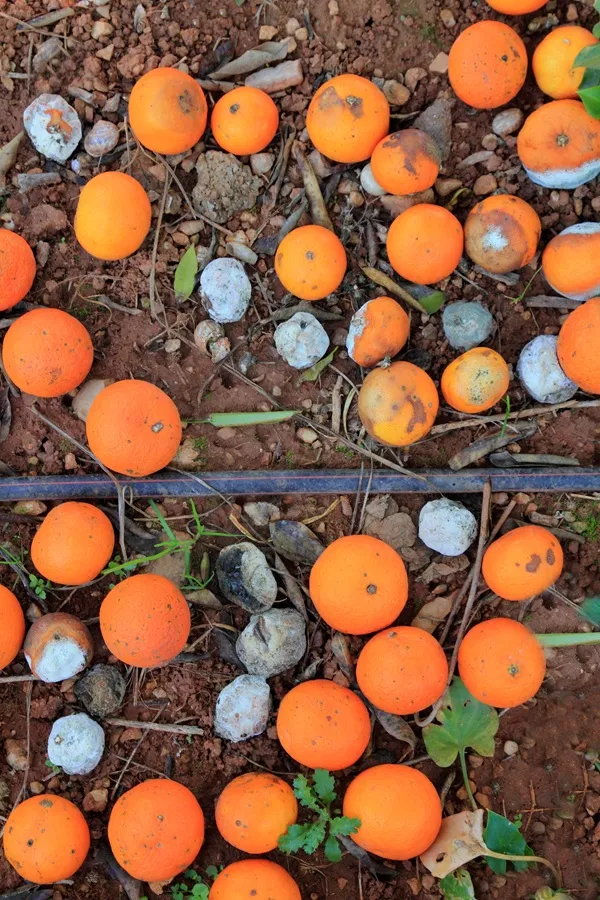Table of Contents
The Fiery Tapestry: A Comprehensive Guide to Spices
Spices, the dried seeds, fruits, roots, bark, or other plant substances, are the soul of global cuisines. They bring vibrant colors, intoxicating aromas, and a wealth of health benefits to our lives.
Colors and Their Significance
Spices showcase a rich spectrum of colors, reflecting their unique chemical compositions and properties:
- Red: Suggests warmth, intensity, and often a peppery or spicy flavor (e.g., paprika, chili powder, cayenne).
- Yellow/Orange: Indicates the presence of carotenoids, known for their antioxidant and anti-inflammatory effects (e.g., turmeric, saffron).
- Brown: Associated with warm, earthy, and sometimes sweet flavors (e.g., cinnamon, nutmeg, cloves).
- Black: Signifies a pungent, peppery, or smoky flavor (e.g., black pepper, peppercorns).
- Green: Hints at freshness and herbal notes (e.g., cardamom pods, some green peppercorns).
Aroma and Flavor Profiles
Spices possess complex aroma profiles that contribute significantly to their culinary appeal. These profiles can range from:
- Warm and Sweet: Cinnamon, nutmeg, cloves.
- Pungent and Peppery: Black pepper, chili peppers, ginger.
- Earthy and Musky: Cumin, coriander, turmeric.
- Floral and Citrusy: Cardamom, saffron, lemongrass.
Benefits and Nutrition
Spices are concentrated sources of:
- Antioxidants: Protecting cells from damage and reducing inflammation.
- Vitamins: A, C, and various B vitamins.
- Minerals: Iron, calcium, magnesium, and potassium.
- Phytochemicals: Plant compounds with various health-promoting properties.
Medicinal Benefits
Spices have been used for centuries in traditional medicine:
- Anti-inflammatory: Turmeric, ginger, cloves.
- Digestive Aid: Cumin, fennel, cardamom.
- Immune Support: Garlic, ginger, oregano.
- Blood Sugar Regulation: Cinnamon, fenugreek.
- Pain Relief: Cloves, ginger.
Important Note: Consult with a healthcare professional before using spices for medicinal purposes, especially if you have existing health conditions or are taking medications.
Global Varieties
The world of spices is vast and diverse:
- Indian Spices: Turmeric, cumin, coriander, cardamom, chili peppers.
- Mediterranean Spices: Oregano, thyme, rosemary, paprika, saffron.
- Asian Spices: Ginger, garlic, lemongrass, star anise, cloves.
- Middle Eastern Spices: Cumin, sumac, za'atar, sesame seeds.
- African Spices: Berbere, harissa, grains of paradise.
Cultivation
Spice cultivation varies depending on the specific spice:
- Tropical Climates: For spices like cinnamon, cloves, and nutmeg.
- Warm Climates: For spices like chili peppers and turmeric.
- Temperate Climates: For spices like mustard seeds and fennel.
Cultivation involves:
- Soil Preparation: Ensuring proper drainage and nutrient content.
- Planting: Seeds, seedlings, or cuttings.
- Irrigation: Providing adequate water.
- Harvesting: Picking spices at their optimal maturity.
- Drying and Processing: To preserve flavor and prevent spoilage.
Usage in Cooking
Spices are essential ingredients in countless cuisines:
- Flavoring Dishes: Adding depth and complexity to savory and sweet dishes.
- Marinades and Rubs: For meats, poultry, and vegetables.
- Spice Blends: Creating unique flavor profiles (e.g., garam masala, curry powder).
- Baking and Desserts: Adding warmth and sweetness to baked goods.
- Beverages: Infusing spices into teas, coffees, and cocktails.
Consumption
Spices are typically consumed in small quantities:
- Ground Spices: Added directly to food.
- Whole Spices: Used in infusions or removed before serving.
- Spice Blends: Mixtures of various spices.
Storage
Proper storage is crucial to maintain spice freshness:
- Airtight Containers: To prevent moisture and oxidation.
- Cool, Dark Place: Away from direct sunlight and heat.
- Whole Spices: Last longer than ground spices.
Transportation
Spices are transported globally:
- Dried and Sealed: To prevent spoilage and maintain aroma.
- Containers and Bags: For bulk transportation.
- Specialized Packaging: For delicate spices like saffron.
Cooking and Culinary Uses Elaborated
- Toasting Spices: Enhances their aroma and flavor.
- Blooming Spices: Releasing their essential oils in hot oil or fat.
- Layering Flavors: Adding spices at different stages of cooking to create depth.
- Balancing Flavors: Using spices to complement and contrast other ingredients.
- Regional Spice Blends: Exploring the unique spice blends of different cuisines.
- Spice Pairings: Understanding which spices complement each other.
- Experimentation: Trying new spice combinations to create unique dishes.
Spices are a culinary treasure, adding flavor, color, and health benefits to our lives. By understanding their properties and uses, we can unlock their full potential and create delicious and vibrant meals.









